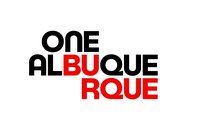City Asking for Urgent Funding to Get People Off Our Streets
There is an urgent need for more treatment and support for people struggling with opioid use disorder, and the City of Albuquerque will receive around $80 million of $150 million in opioid settlement funds to help our community. The Administration is urging the City Council to use the City’s share of the settlement to expand proven programs and fund treatment and services.
“We all know or have seen people struggling with addiction on our streets, and we can’t wait another day to get folks the treatment and support they need,” said Mayor Tim Keller. “We need this funding now to be able to get hundreds of people connected to recovery services as soon as possible; lives are literally on the line.”
An initial proposal from some City Councilors and County Commissioners would tie up the funds to build new facilities, which would take years. While we support the County’s ability to use the funding how they need, the City has already made significant investments in infrastructure through the Gateway Network including the Medical Sobering Center, the First Responder Receiving Area, and the Recovery Gateway micro-community, and now we need the funds to run services in those spaces.
“We know that we have to approach addiction from all angles, and we respect that the County has their own vision for how to use their portion of the funds,” said Chief Administrative Officer Dr. Samantha Sengel. “For the City of Albuquerque, our most urgent need is funding services in the facilities we built out to help people suffering from addiction.”
Many providers in the community agree that the funds should be used for vital services now.
"At Serenity Mesa, we see firsthand that recovery is possible, and with the right support, young people can build bright, fulfilling futures beyond addiction," said Jennifer Burke, Executive Director of Serenity Mesa. "These funds are an opportunity to bring real hope to those who need it most—expanding treatment, recovery housing, and community support so that people struggling with addiction have the chance to heal and thrive."
“The City has taken critical steps to build out a system of support with the Gateway Network, and we need to put the opioid settlement funding to work to expand treatment options,” said Chief Financial Officer Kevin Sourisseau. “As Gateway services continue to come on line, now is the time to put the funding to work, not let millions go unused as thousands suffer on our streets.”
According to a 2021 report, New Mexico had the 6th highest overdose rate in the country, with an estimated 1,029 overdose deaths.
The City of Albuquerque recommends the seven following uses of funding.
- LEVERAGING THE SOBERING CENTER: expand medical support, harm reduction, in-patient treatment, and overdose prevention services. These efforts will increase access to crisis stabilization to help reduce hospital strain.
- RECOVERY HOUSING: expand recovery housing options for individuals in intensive outpatient programs.
- NALOXONE ACCESS EXPANSION: expand medical support, harm reduction, and overdose prevention services, deploying naloxone to all first responder vehicles and distributing naloxone kits to community-based organizations that work with vulnerable populations.
- COMMUNITY-BASED TREATMENT ACCESS & QUALITY: increase access to community-based treatment with a focus on integrated, person-centered care. Launch a Community-Oriented Recovery (COR) Pilot Program and expand Albuquerque Fire and Rescue’s Medication for Opioid Use Disorder (MOUD) program.
- PEER SUPPORT EXPANSION: increase peer support roles across the City and bolster harm reduction and recovery programs.
- COMPREHENSIVE EDUCATION: Comprehensive education or substance abuse prevention, harm reduction, and recovery; including a Restorative Justice Program, intergenerational programming at multigenerational centers, and culturally relevant opioid prevention and tribal outreach.
CONNECTING DISCONNECTED YOUTH: Engagement of disconnected youth (ages 16-24) who are not in education or employment. Programming will include expansion and enhancement of the School-Based Violence Intervention Program and an Opportunity Youth Reengagement Pilot Program.


